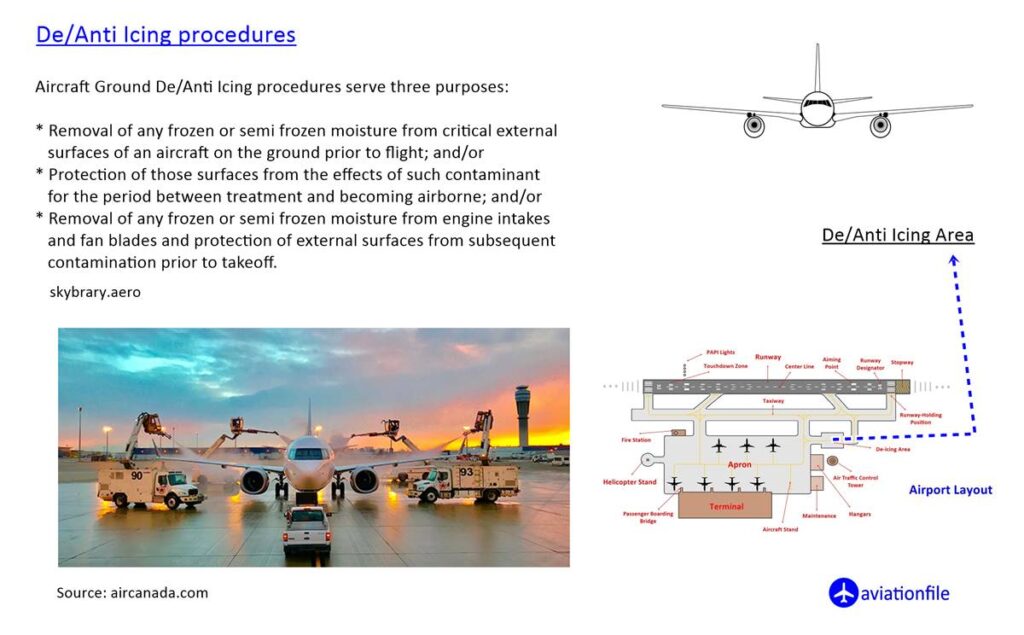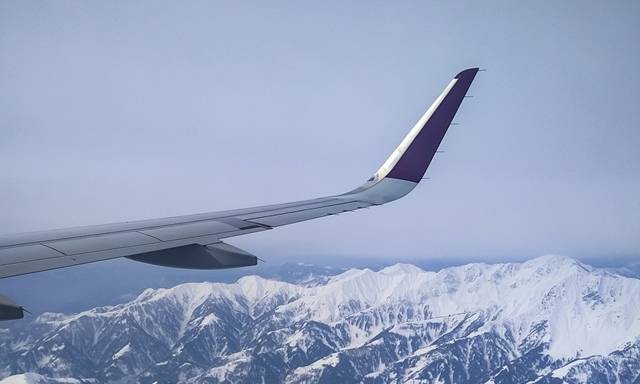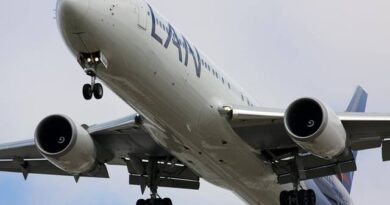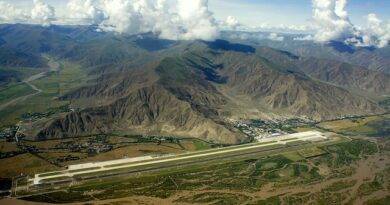Forms of Icing in Aviation
Icing is a significant hazard to aviation, as it can reduce aircraft performance and increase the risk of accidents. Icing occurs when supercooled water droplets (water droplets that are below freezing temperature but remain in a liquid state) freeze on impact with an aircraft’s surfaces.
There are three main forms of icing in aviation:
- Clear ice is a thin, transparent layer of ice that forms when supercooled water droplets freeze on impact with an aircraft’s surfaces. It is the most dangerous form of icing, as it is difficult to see and can quickly build up on aircraft surfaces, disrupting airflow and reducing lift.
- Rime ice is a white, opaque layer of ice that forms when supercooled water droplets freeze into a porous, granular structure. It is less dangerous than clear ice, but it can still reduce aircraft performance and increase drag.
- Mixed ice is a combination of clear ice and rime ice. It is the most common form of icing in aviation.
Icing Conditions
Icing can occur in a variety of atmospheric conditions, but it is most likely to occur in clouds and precipitation between the temperatures of 0°C and -20°C. Icing is also more likely to occur in areas with high humidity and strong winds.
Icing Hazards
Icing can have a number of negative effects on aircraft performance, including:
- Reduced lift: Ice buildup on aircraft surfaces can disrupt airflow and reduce lift, making it more difficult for the aircraft to fly.
- Increased drag: Ice buildup can also increase drag, making it more difficult for the aircraft to maintain speed.
- Weight gain: Ice buildup can add significant weight to an aircraft, reducing its payload capacity and performance.
- Reduced control effectiveness: Ice buildup on aircraft control surfaces can reduce their effectiveness, making it more difficult for the pilot to control the aircraft.
- Engine icing: Ice buildup in aircraft engines can reduce airflow and power output, and can even lead to engine failure.
Preventing and Mitigating Icing Hazards

There are a number of ways to prevent and mitigate icing hazards, including:
- Avoiding icing conditions: Pilots should avoid flying through clouds and precipitation in icing conditions whenever possible.
- Using anti-icing and de-icing equipment: Aircraft are equipped with anti-icing and de-icing systems to prevent and remove ice buildup. Anti-icing systems apply a protective coating to aircraft surfaces to prevent ice from forming. De-icing systems remove ice buildup from aircraft surfaces.
- Monitoring aircraft systems: Pilots should carefully monitor aircraft systems for signs of icing, such as changes in performance or control effectiveness.
In conclusion, Icing is a serious hazard to aviation, but it can be mitigated by avoiding icing conditions, using anti-icing and de-icing equipment, and carefully monitoring aircraft systems for signs of icing.
References:
- Federal Aviation Administration (FAA): Icing https://www.faa.gov/documentlibrary/media/advisory_circular/ac_91-74b.pdf
- National Aeronautics and Space Administration (NASA): Icing https://aircrafticing.grc.nasa.gov/
- Aircraft Owners and Pilots Association (AOPA): Icing https://www.aopa.org/training-and-safety/online-learning/safety-spotlights/weather-wise-precipitation-and-icing/icing
- Transport Canada: Icing https://tc.canada.ca/en/aviation/publications/guidelines-aircraft-ground-icing-operations-tp-14052
- International Civil Aviation Organization (ICAO): Icing https://en.wikipedia.org/wiki/Icing_conditions



